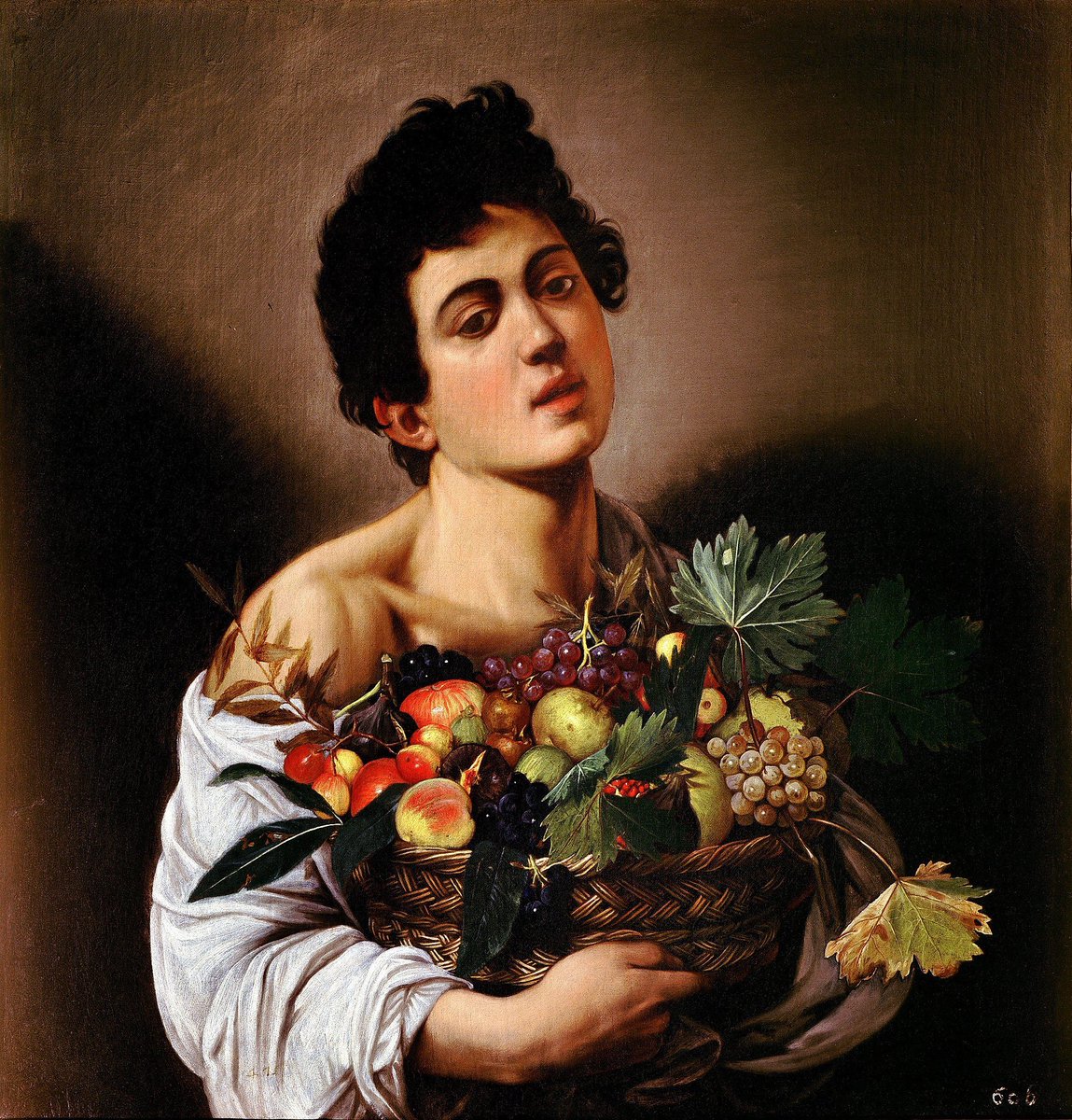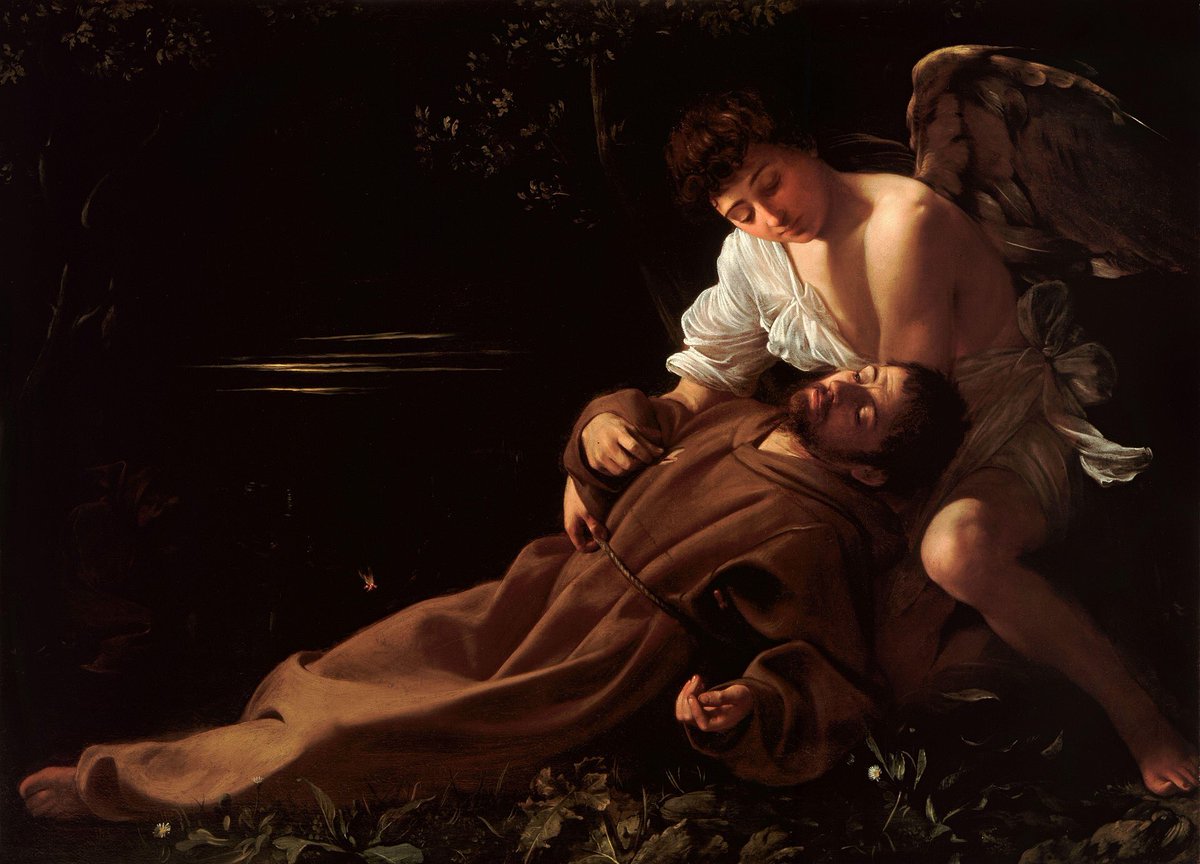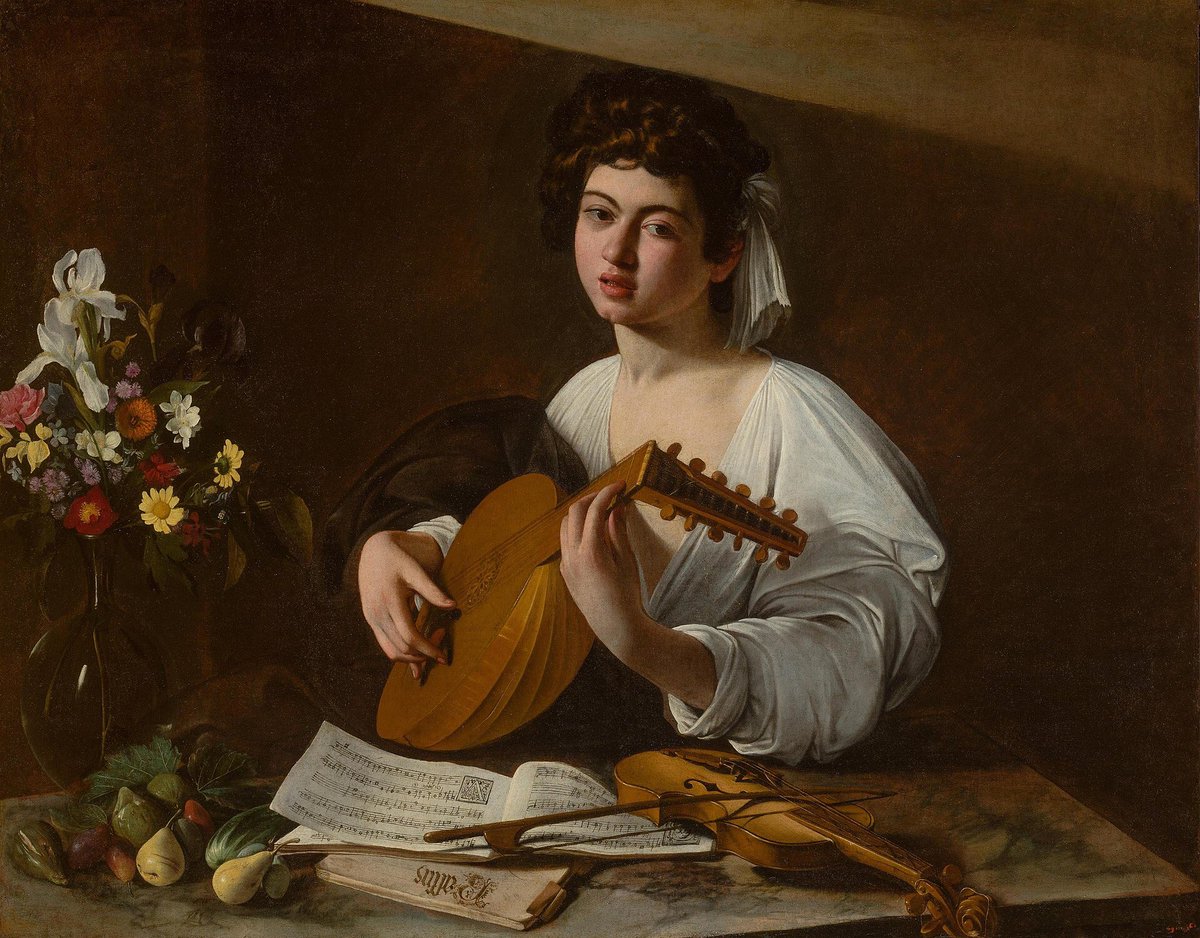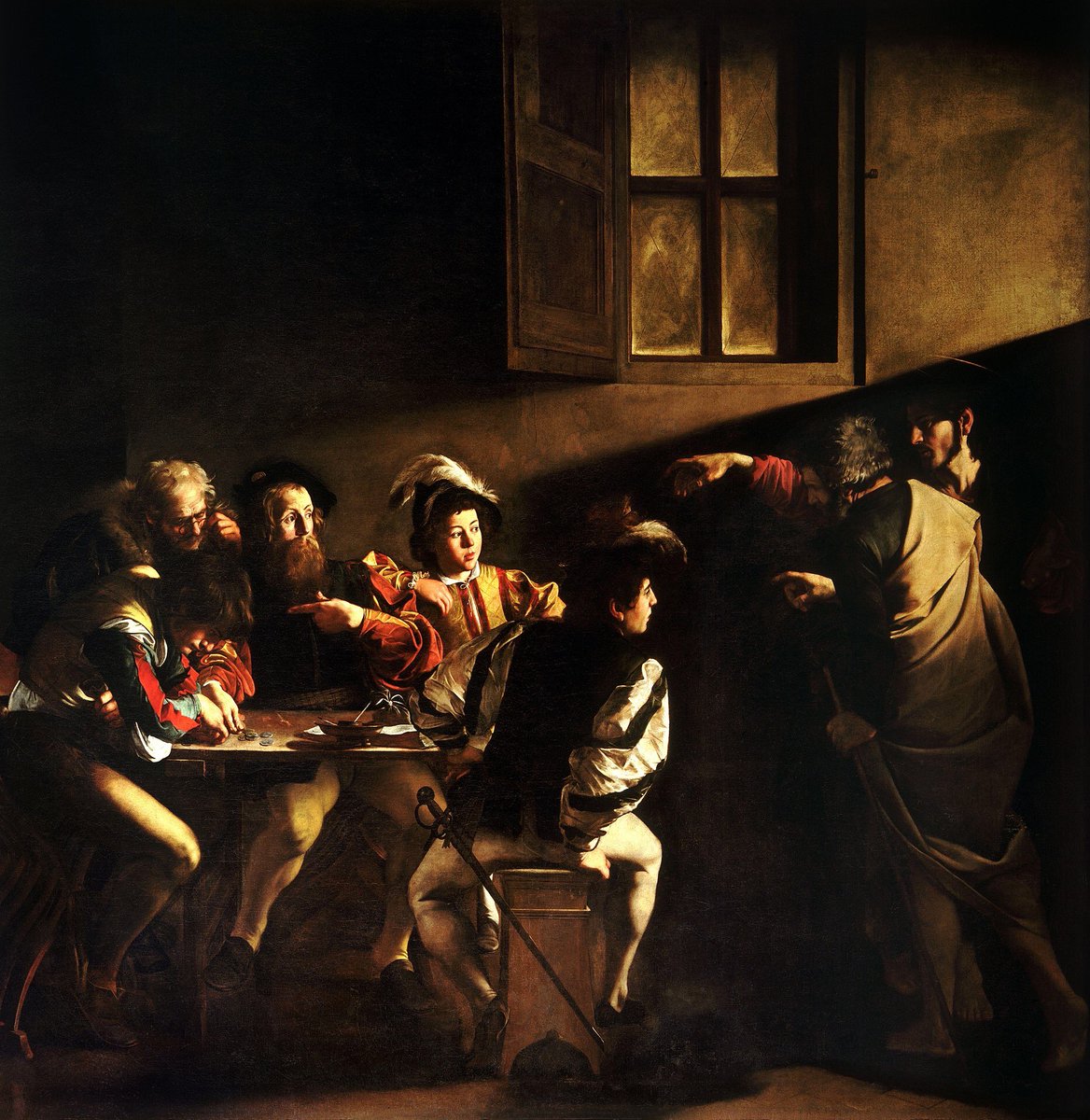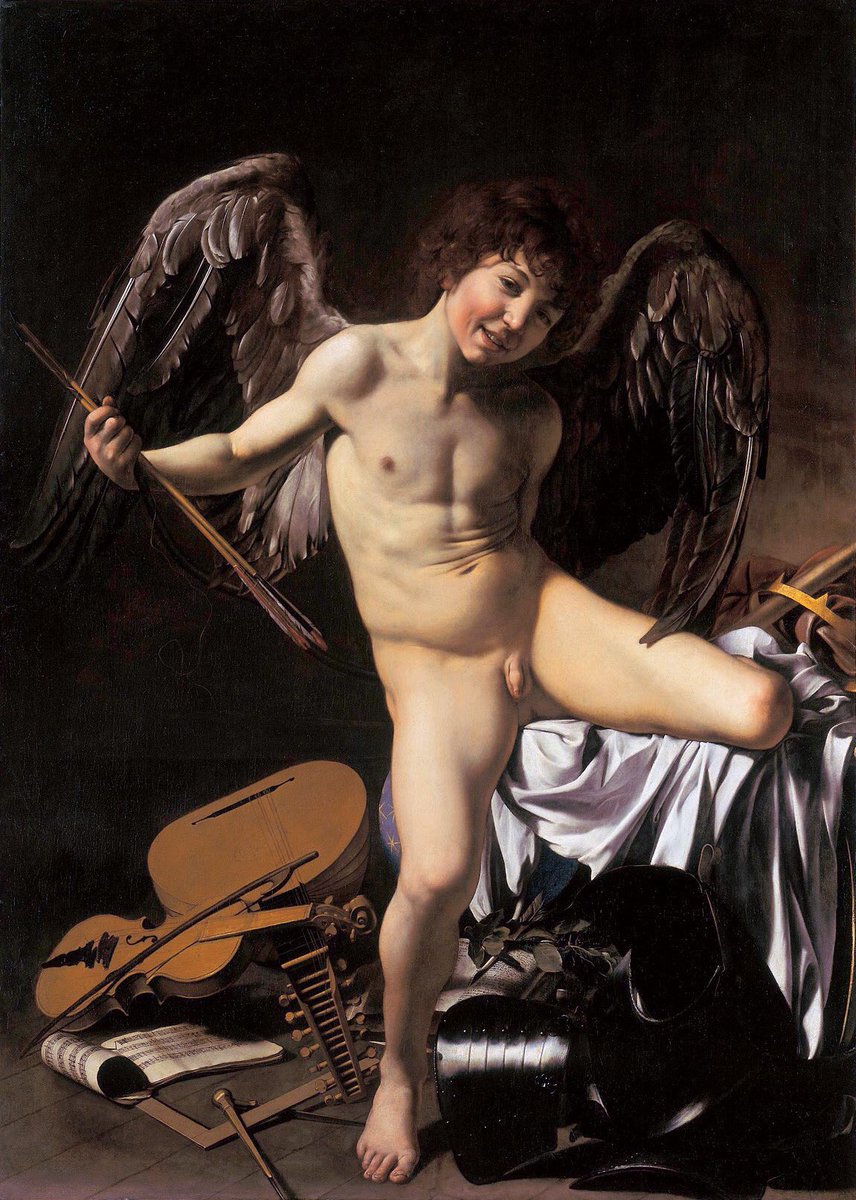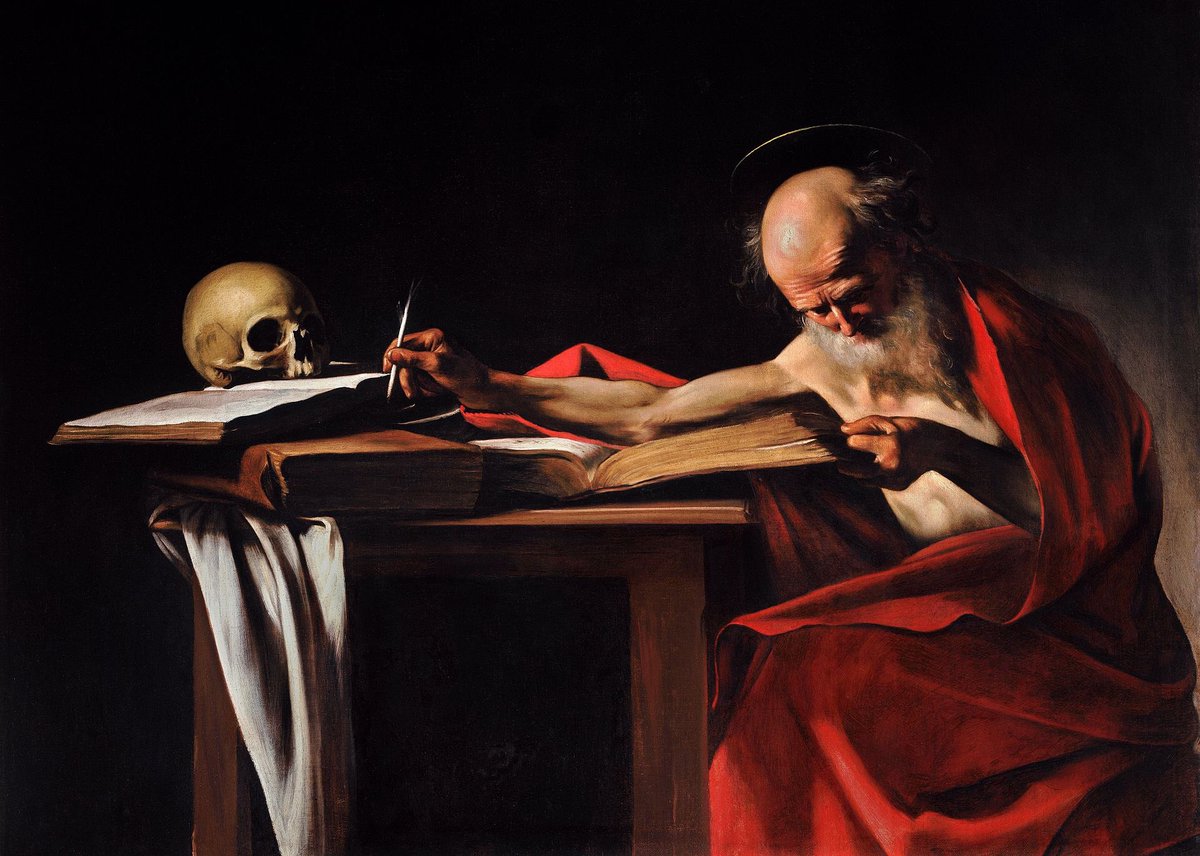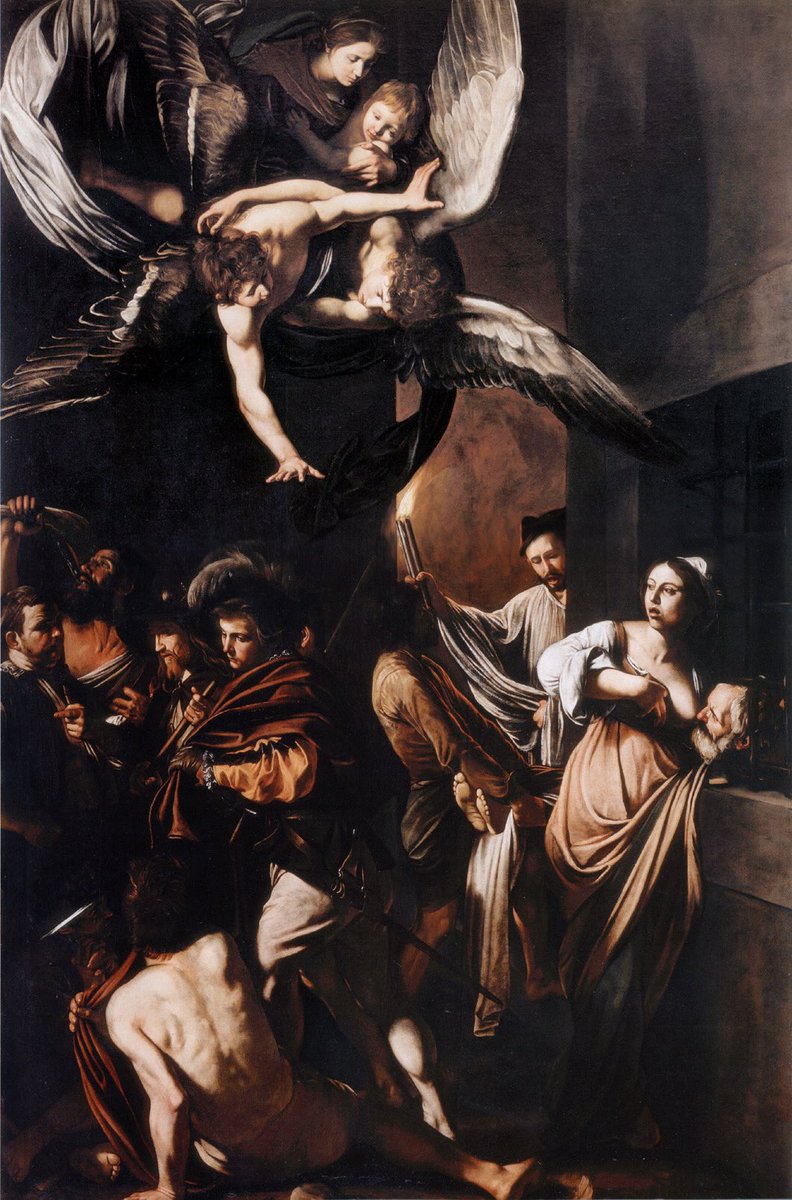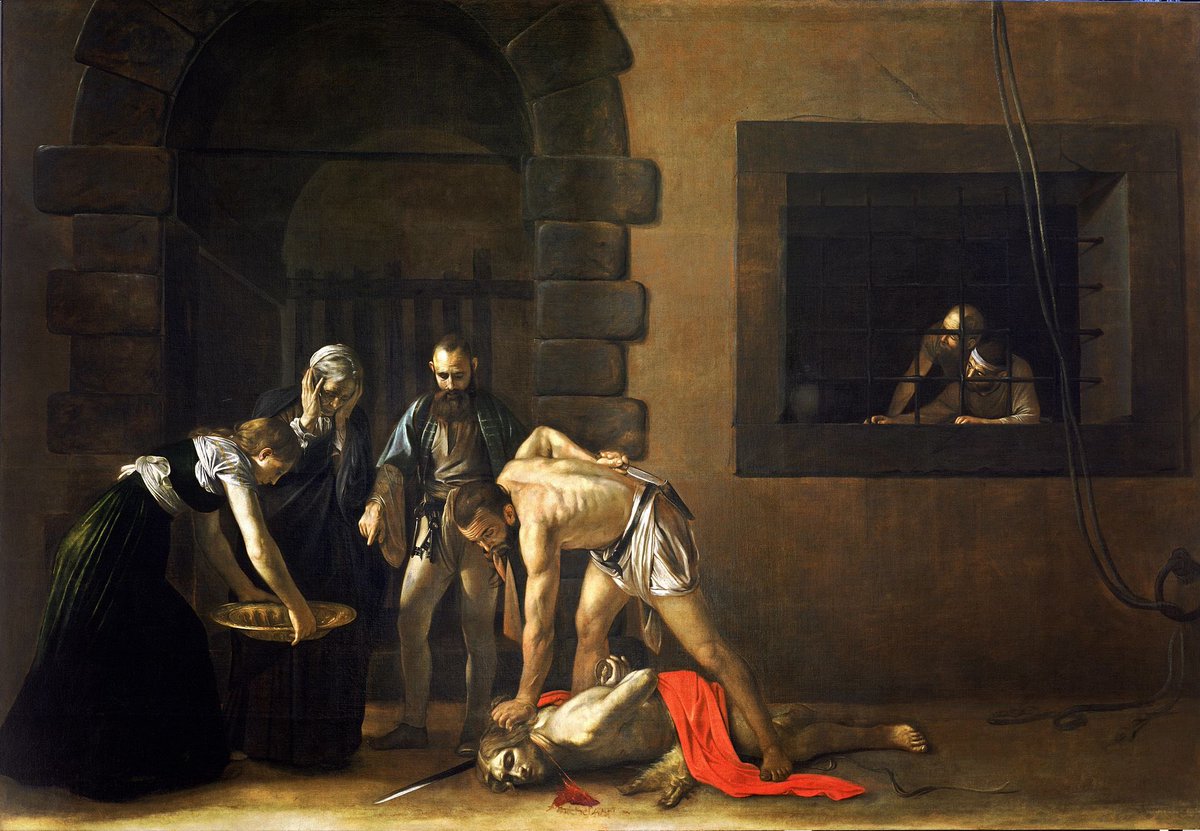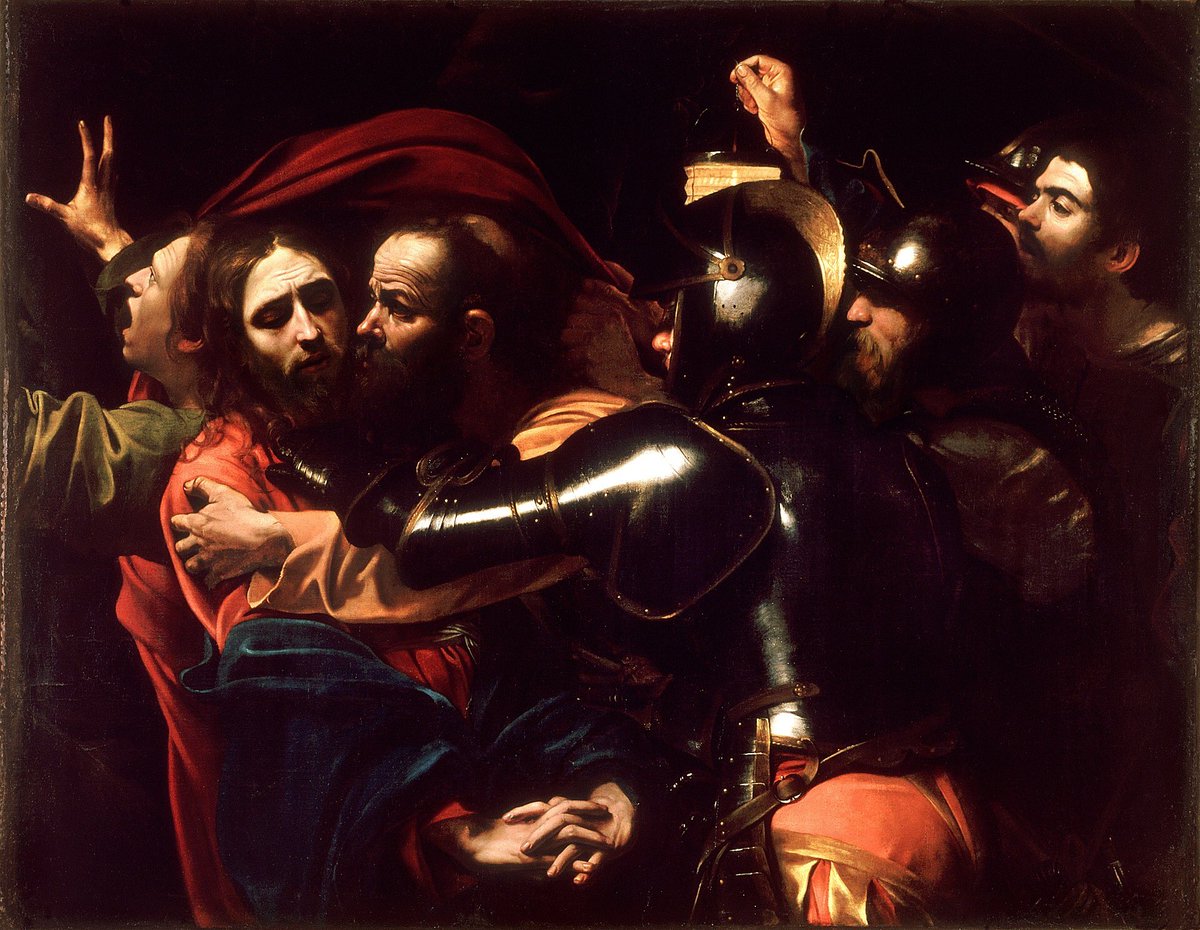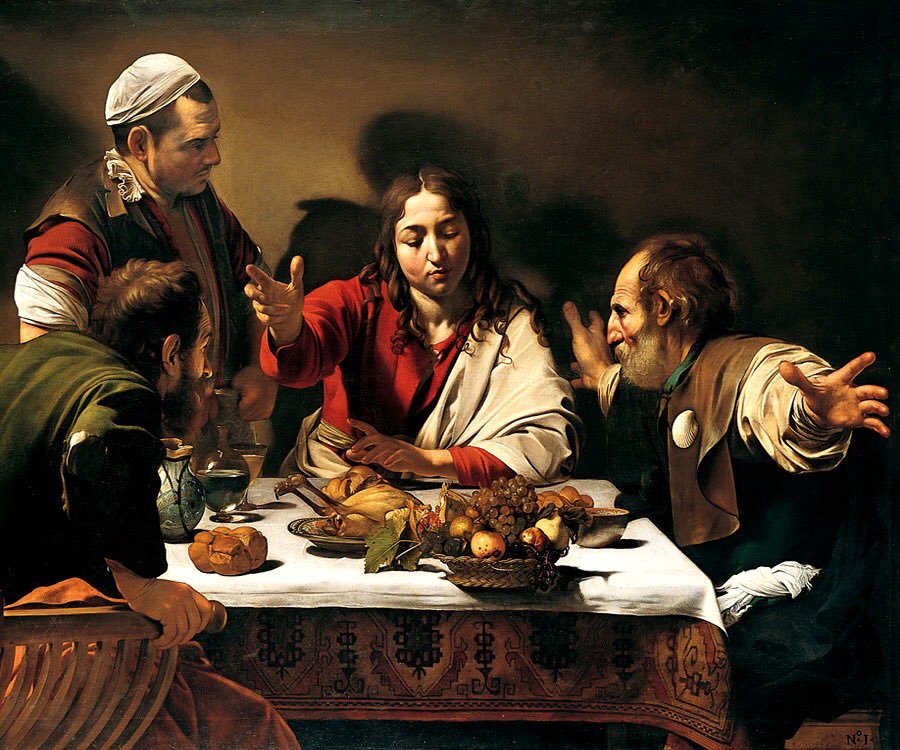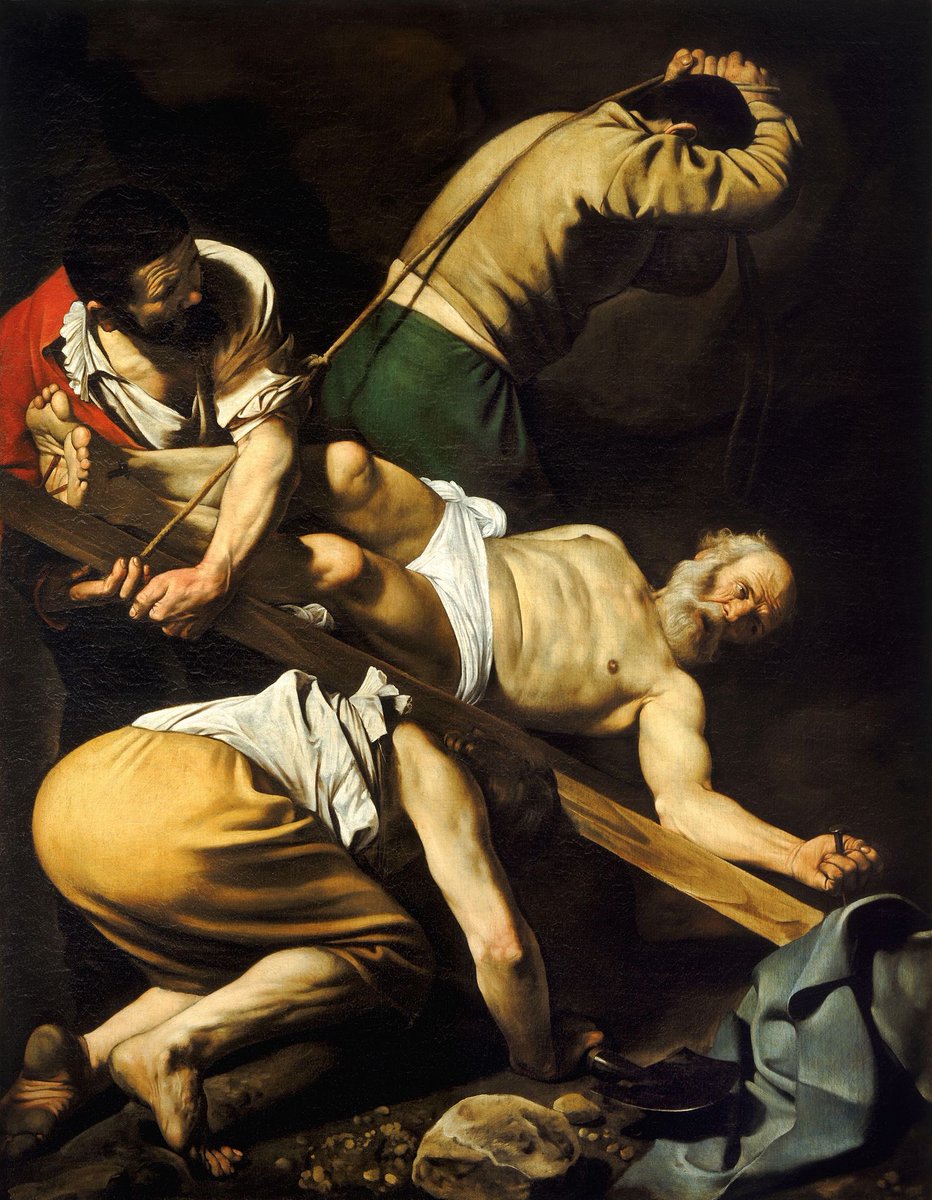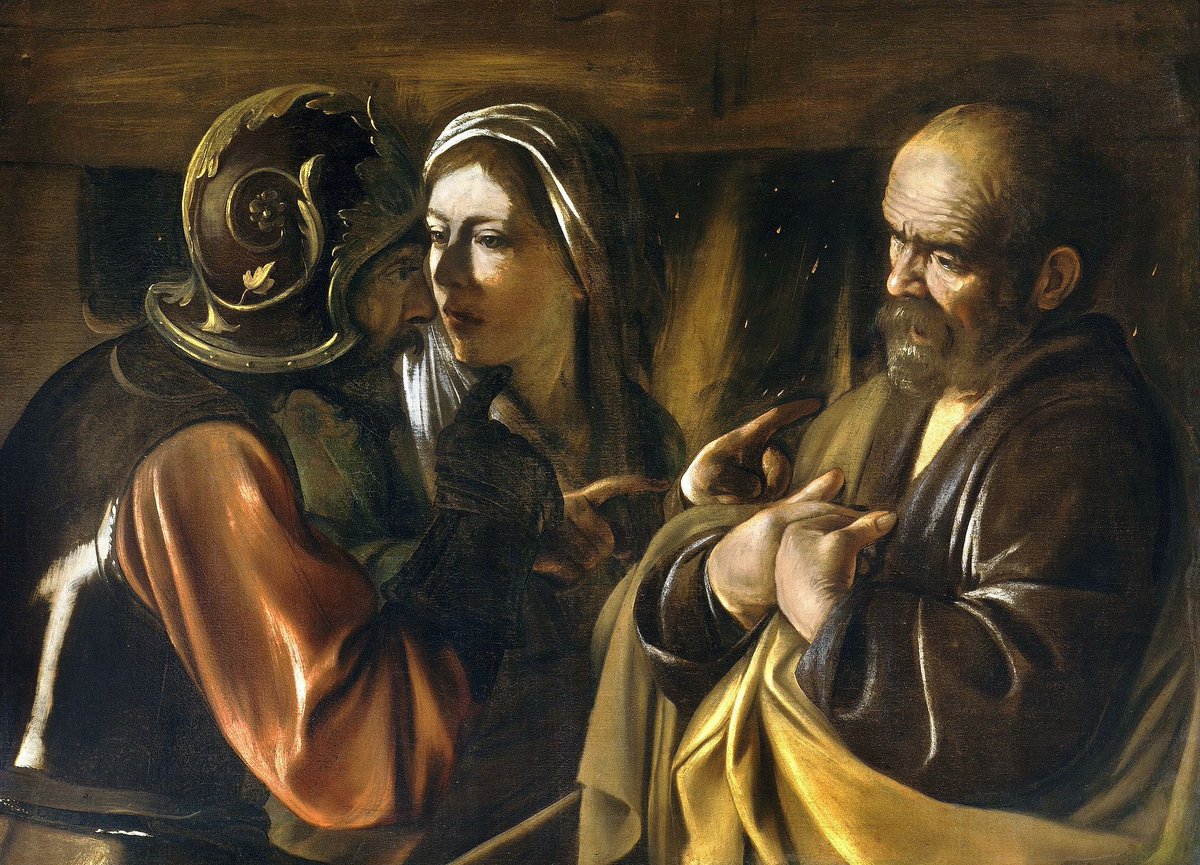Michelangelo Merisi da Caravaggio  https://abs.twimg.com/emoji/v2/... draggable="false" alt="💎" title="Edelstein" aria-label="Emoji: Edelstein"> #BOTD 1571 (d. 18 July 1610) was an Italian painter ... His paintings combine a realistic observation of the human state, both physical and emotional, with a dramatic use of lighting, which had a formative influence on Baroque painting.
https://abs.twimg.com/emoji/v2/... draggable="false" alt="💎" title="Edelstein" aria-label="Emoji: Edelstein"> #BOTD 1571 (d. 18 July 1610) was an Italian painter ... His paintings combine a realistic observation of the human state, both physical and emotional, with a dramatic use of lighting, which had a formative influence on Baroque painting.
Caravaggio employed close physical observation with a dramatic use of chiaroscuro that came to be known as tenebrism. He made the technique a dominant stylistic element, darkening shadows and transfixing subjects in bright shafts of light.
In the 20th century interest in his work revived, and his importance to the development of Western art was reevaluated. The 20th-century art historian André Berne-Joffroy stated, "What begins in the work of Caravaggio is, quite simply, modern painting."
The Calling of Saint Matthew (1599–1600), Contarelli Chapel, San Luigi dei Francesi, Rome. Without recourse to flying angels, parting clouds or other artifice, Caravaggio portrays the instant conversion of St Matthew by means of a beam of light and the pointing finger of Jesus.
Amor Vincit Omnia, 1601–1602, Gemäldegalerie, Berlin. Caravaggio shows Cupid prevailing over all human endeavors: war, music, science, government.
The Beheading of Saint John (1608) by Caravaggio (Saint John& #39;s Co-Cathedral, Valletta, Malta)
The Taking of Christ, 1602, National Gallery of Ireland, Dublin. Caravaggio& #39;s application of the chiaroscuro technique shows through on the faces and armour notwithstanding the lack of a visible shaft of light. The figure on the extreme right is a self-portrait.
Supper at Emmaus, 1601, oil on canvas, 139 cm × 195 cm (55 in × 77 in), National Gallery, London. Caravaggio included himself as the figure at the top left.

 Read on Twitter
Read on Twitter #BOTD 1571 (d. 18 July 1610) was an Italian painter ... His paintings combine a realistic observation of the human state, both physical and emotional, with a dramatic use of lighting, which had a formative influence on Baroque painting." title="Michelangelo Merisi da Caravaggio https://abs.twimg.com/emoji/v2/... draggable="false" alt="💎" title="Edelstein" aria-label="Emoji: Edelstein"> #BOTD 1571 (d. 18 July 1610) was an Italian painter ... His paintings combine a realistic observation of the human state, both physical and emotional, with a dramatic use of lighting, which had a formative influence on Baroque painting." class="img-responsive" style="max-width:100%;"/>
#BOTD 1571 (d. 18 July 1610) was an Italian painter ... His paintings combine a realistic observation of the human state, both physical and emotional, with a dramatic use of lighting, which had a formative influence on Baroque painting." title="Michelangelo Merisi da Caravaggio https://abs.twimg.com/emoji/v2/... draggable="false" alt="💎" title="Edelstein" aria-label="Emoji: Edelstein"> #BOTD 1571 (d. 18 July 1610) was an Italian painter ... His paintings combine a realistic observation of the human state, both physical and emotional, with a dramatic use of lighting, which had a formative influence on Baroque painting." class="img-responsive" style="max-width:100%;"/>
